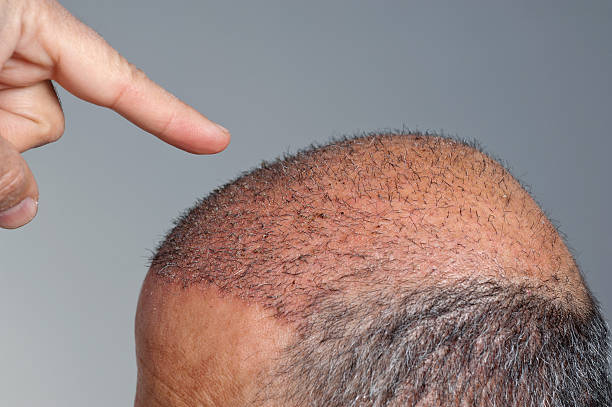Understanding Hair Transplantation: Procedures, Costs, and What to Expect
Hair transplantation has evolved significantly over the decades, offering effective solutions for those experiencing hair loss. This surgical procedure involves removing hair follicles from one part of the body (typically the back or sides of the head) and implanting them in areas experiencing thinning or baldness. Modern techniques have made the procedure more efficient, less invasive, and capable of producing natural-looking results that can significantly improve appearance and self-confidence.

What is a Hair Transplant and How Does it Work?
A hair transplant is a surgical procedure that moves hair from areas with sufficient growth to balding or thinning areas. The science behind this technique relies on the concept of “donor dominance,” where hair follicles taken from the back and sides of the scalp are genetically resistant to the hormone dihydrotestosterone (DHT), which causes hair loss. When transplanted to balding areas, these follicles maintain their resistance and continue to grow naturally.
Two main techniques dominate the field of hair transplantation: Follicular Unit Transplantation (FUT) and Follicular Unit Extraction (FUE). FUT involves removing a strip of scalp from the donor area and dissecting it into individual follicular units for transplantation. FUE, on the other hand, extracts individual follicular units directly from the donor area using a specialized punch tool. Both methods have their advantages and considerations regarding recovery time, scarring, and suitability for different patients.
Hair Transplant in Frontal Area: Techniques and Considerations
The frontal hairline is often the first area to show signs of male pattern baldness and is arguably the most cosmetically important region for hair restoration. Transplanting hair to the frontal area requires particular artistic skill because this zone frames the face and creates the first impression of one’s appearance.
Creating a natural-looking frontal hairline involves careful planning of the hairline design, considering factors such as facial structure, age, and ethnicity. Surgeons typically place finer, single-hair follicular units along the hairline edge, gradually increasing to multi-hair units behind this zone to create density while maintaining a natural appearance. The angle and direction of implanted hairs must match the natural hair growth pattern in this region to achieve an undetectable result.
Hair Transplant Cost: Understanding the Investment
The cost of hair transplantation varies widely based on several factors, including the extent of hair loss, the technique used, the surgeon’s expertise, geographic location, and the number of grafts required. In the United States, hair transplant costs are typically calculated per graft, with prices ranging from $4 to $15 per graft.
For a typical session requiring 1,500 to 3,000 grafts, patients can expect to pay between $4,000 and $15,000. More extensive procedures requiring 3,000+ grafts may cost $10,000 to $20,000 or more. FUE procedures often command a premium over FUT, primarily due to the more labor-intensive and time-consuming nature of the extraction process.
Hair Transplant Cost USA: Regional Variations
Hair transplant pricing varies significantly across different regions of the United States. Procedures tend to be most expensive in major metropolitan areas such as New York City, Los Angeles, Miami, and Chicago, where overhead costs are higher and there’s greater demand for premium services.
Mid-tier cities generally offer more moderate pricing, while smaller cities and rural areas may provide more affordable options. However, patients should consider that traveling to a less expensive region might involve additional costs for travel, accommodation, and follow-up care.
| Region | Average Cost per Graft | Average Cost for 2,000 Grafts |
|---|---|---|
| Northeast (NYC, Boston) | $5-15 | $10,000-$30,000 |
| West Coast (LA, SF) | $5-12 | $10,000-$24,000 |
| Midwest (Chicago, Detroit) | $4-10 | $8,000-$20,000 |
| South (Miami, Dallas) | $4-9 | $8,000-$18,000 |
| Rural/Smaller Cities | $3-8 | $6,000-$16,000 |
Prices, rates, or cost estimates mentioned in this article are based on the latest available information but may change over time. Independent research is advised before making financial decisions.
Finding Hair Transplant Clinics Nearby: What to Look For
When searching for a hair transplant clinic in your area, several factors should guide your decision beyond proximity and cost. The surgeon’s qualifications and experience should be paramount—look for board certification in dermatology or plastic surgery and specific training in hair restoration. Many clinics showcase before-and-after portfolios of previous patients, which can provide valuable insight into the surgeon’s skill and aesthetic approach.
Facility accreditation and the use of modern equipment are also important considerations. Reputable clinics should be willing to provide consultations where they evaluate your hair loss pattern, discuss realistic outcomes, and answer questions about their approach. Reading patient reviews and testimonials can offer perspectives on the entire experience, including results, patient care, and follow-up support.
What to Expect During and After a Hair Transplant
The hair transplant procedure typically begins with the administration of local anesthesia to the donor and recipient areas. Depending on the technique (FUT or FUE) and the number of grafts, the procedure can take between 4 to 8 hours. Most patients remain awake during the procedure and can watch movies, listen to music, or take breaks as needed.
Post-procedure, the scalp will be tender and may require pain medication for several days. Small scabs will form around each transplanted follicle, which typically shed within a week to ten days. Most patients can return to work within 2-5 days, though strenuous activity should be avoided for at least two weeks.
Initial transplanted hair will fall out within 2-3 weeks after the procedure—this is normal and part of the growth cycle. New growth typically begins around months 3-4, with significant improvements visible at 6-9 months. The final results are generally apparent after 12-18 months when the transplanted hair has fully matured in thickness and texture.
This article is for informational purposes only and should not be considered medical advice. Please consult a qualified healthcare professional for personalized guidance and treatment.




